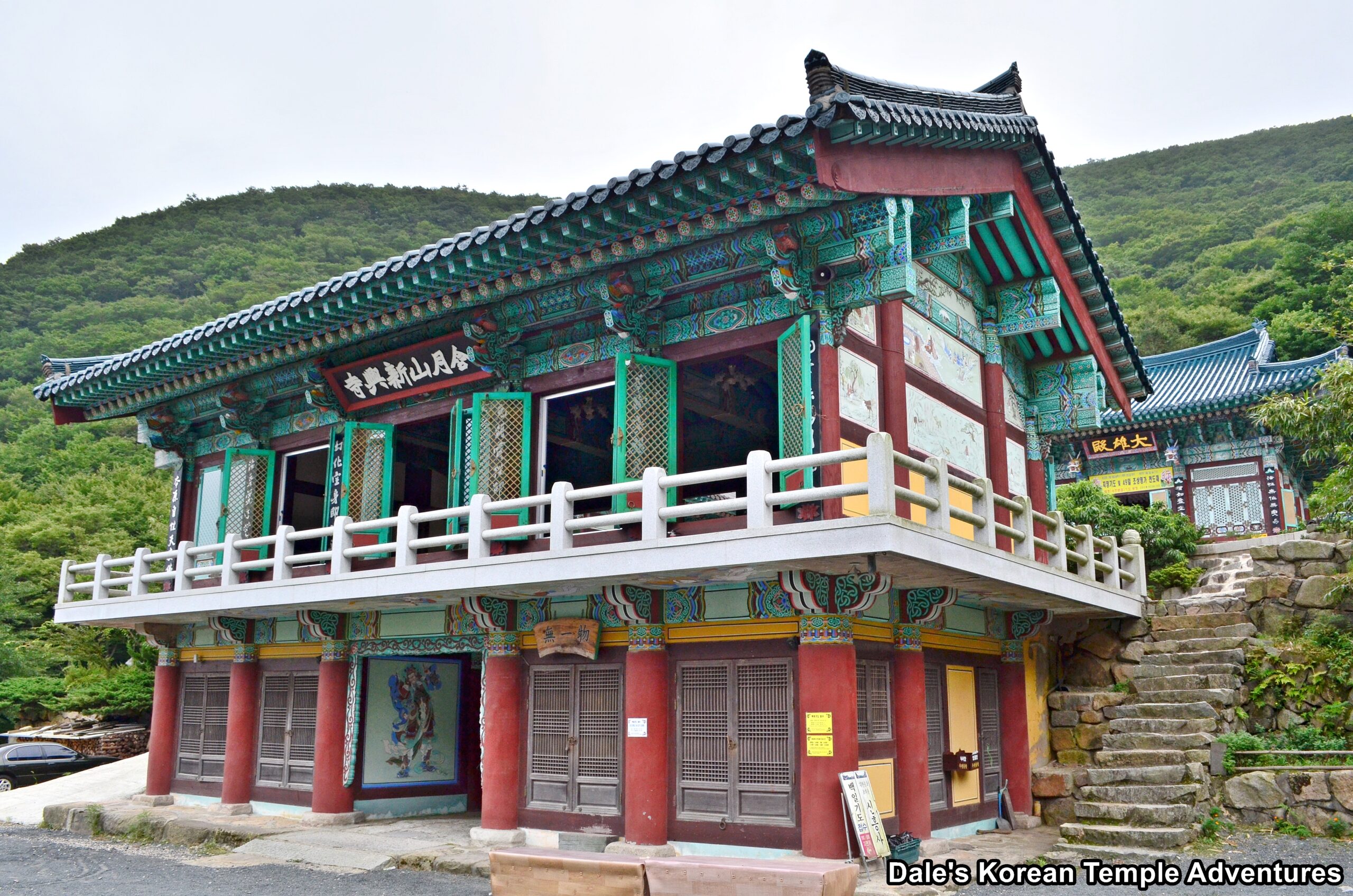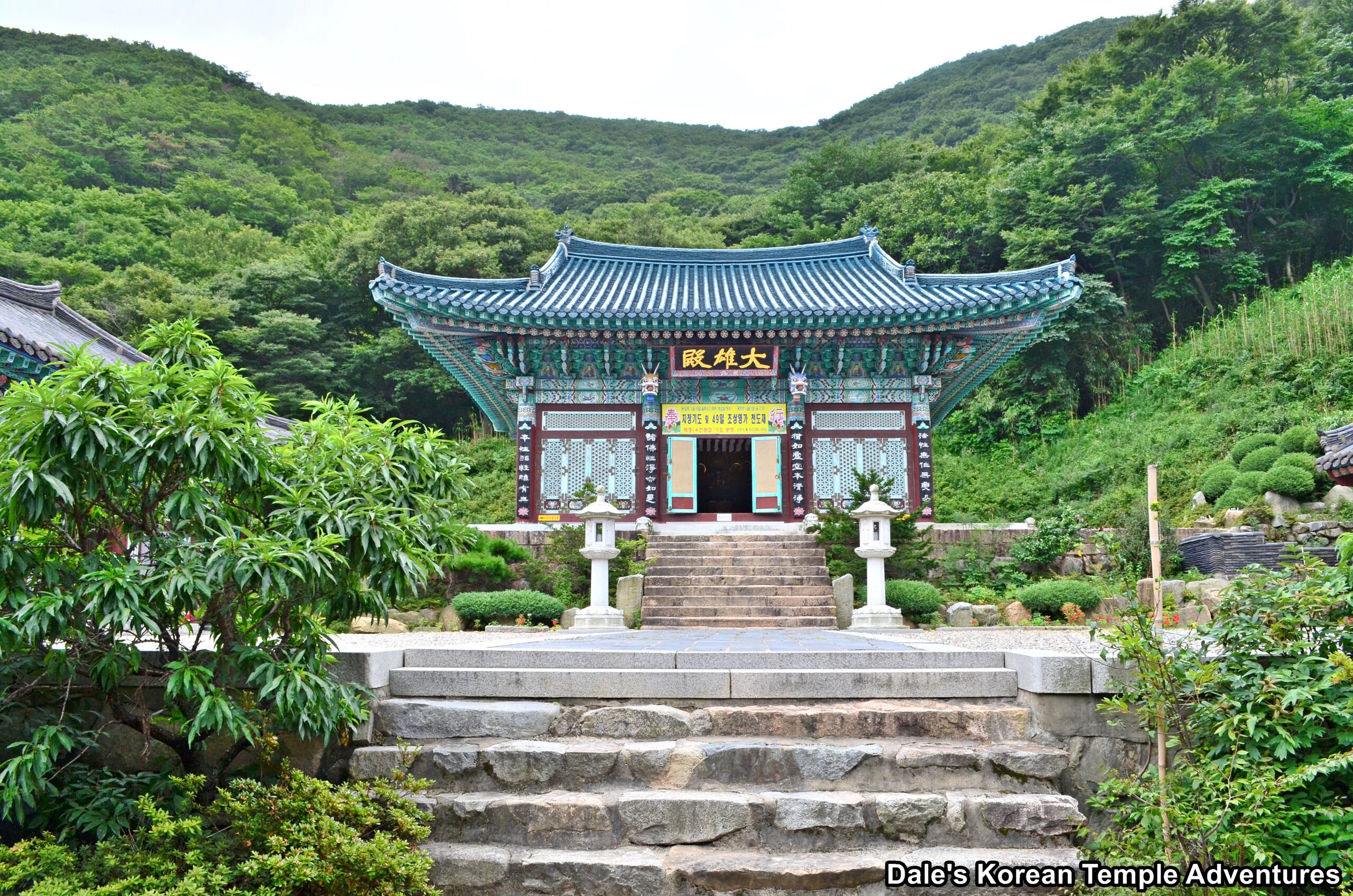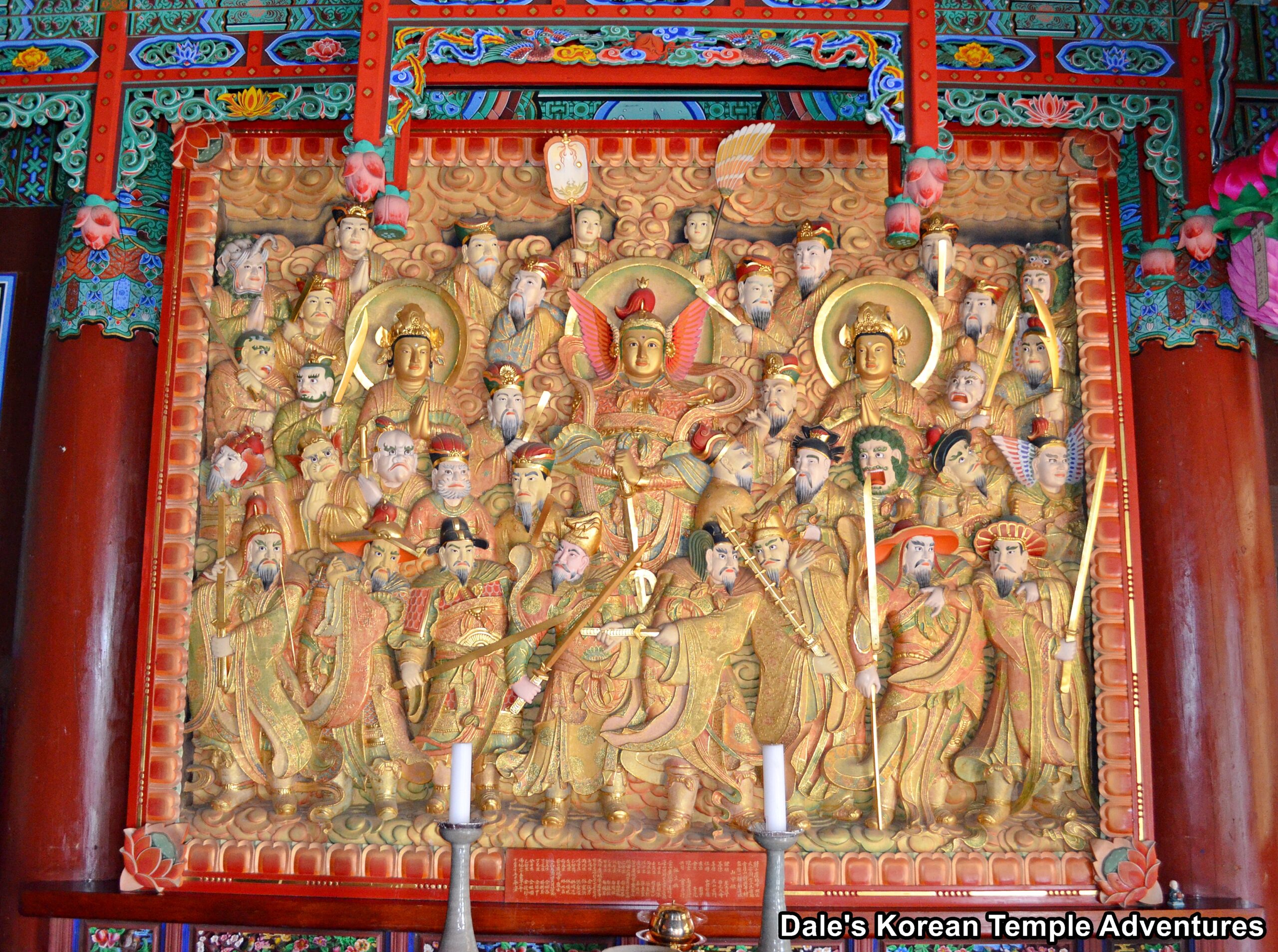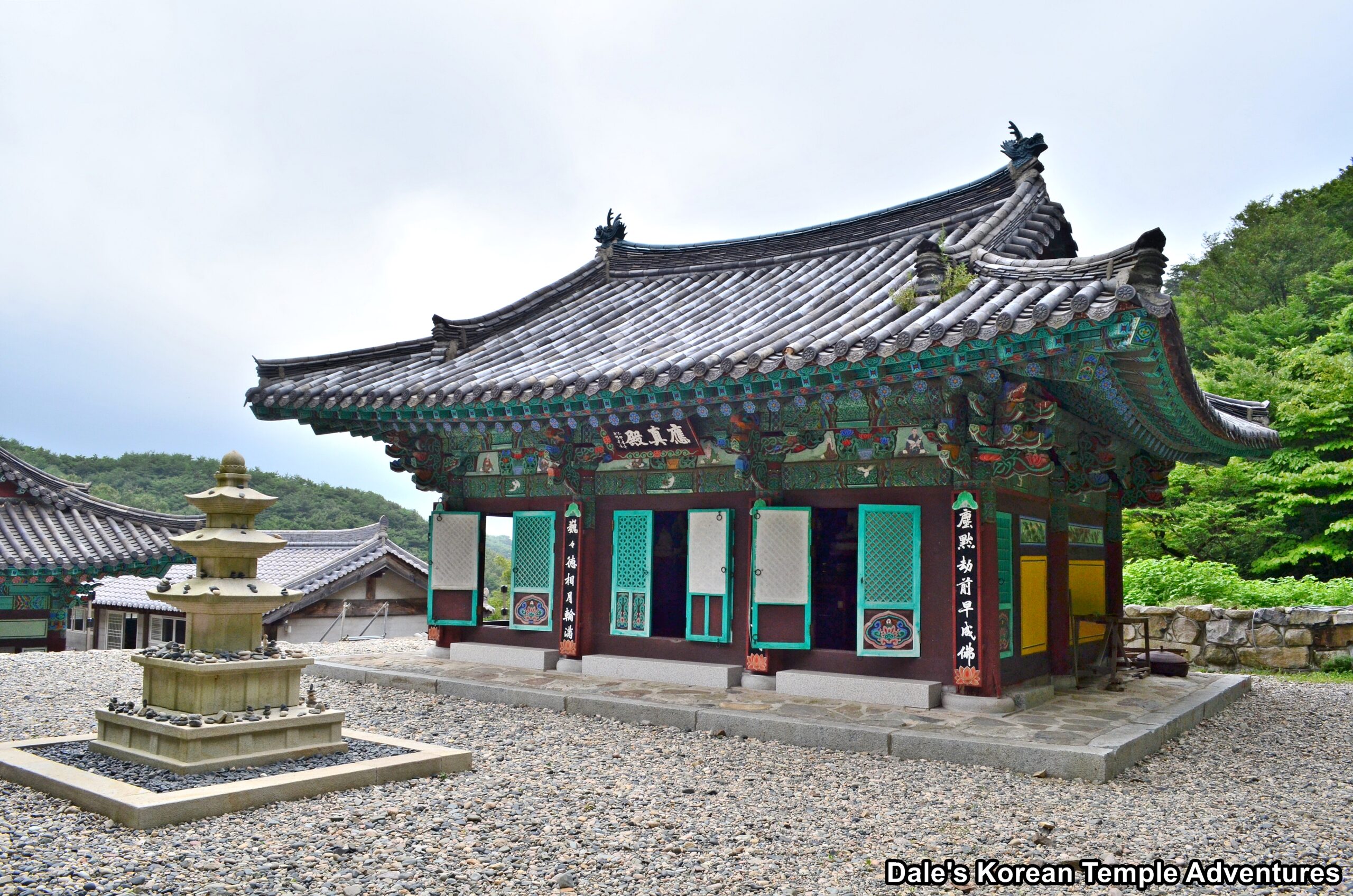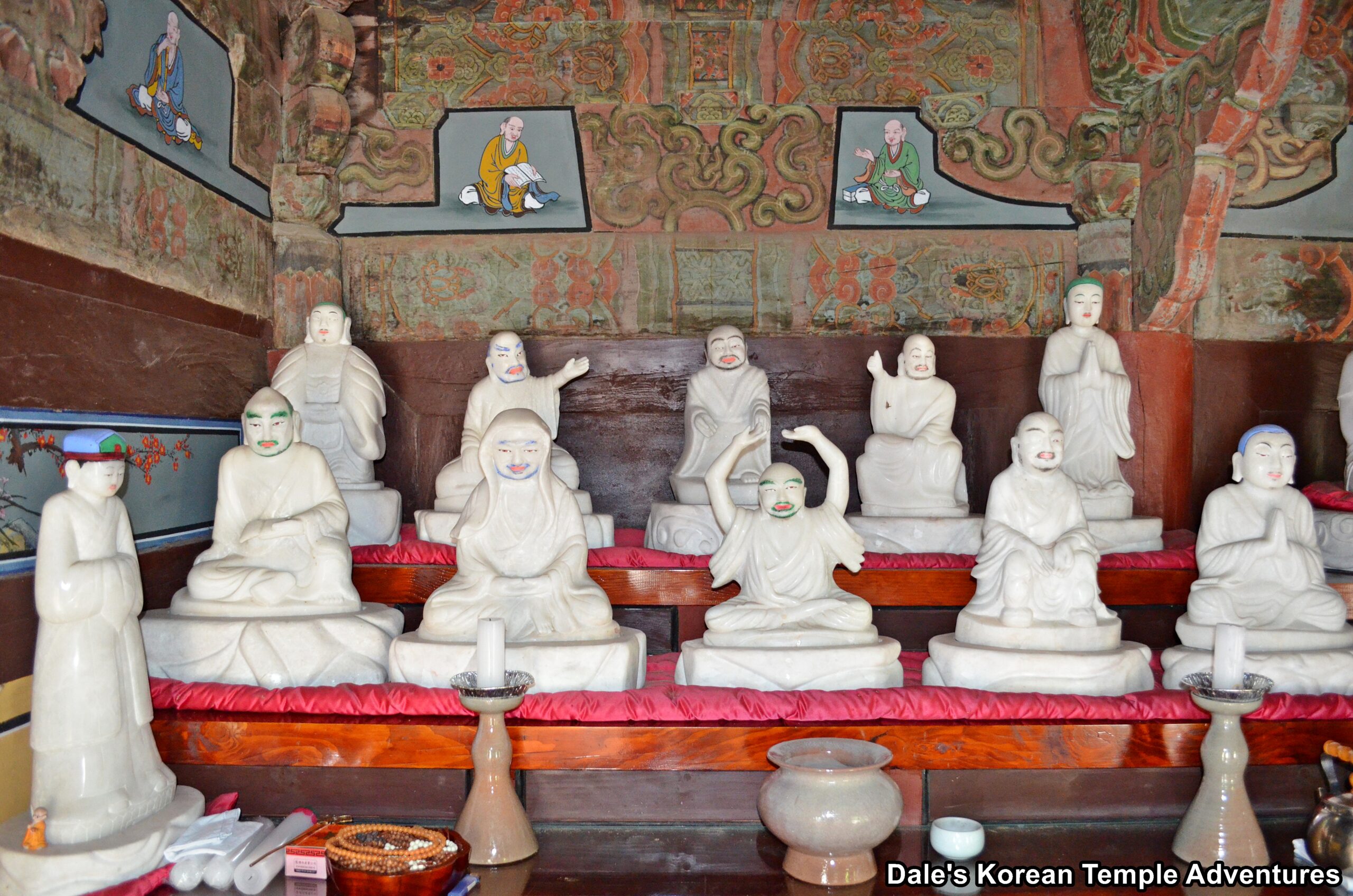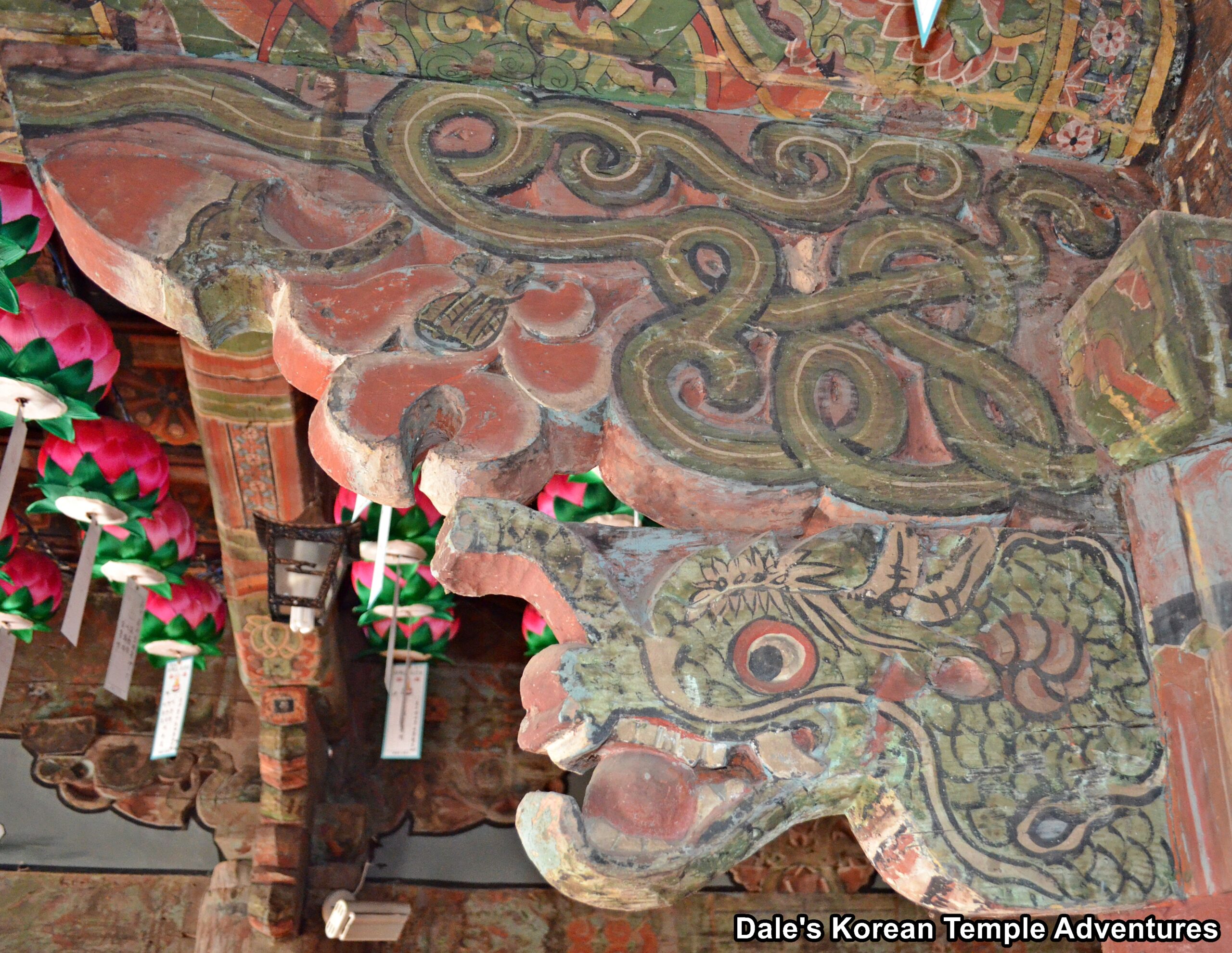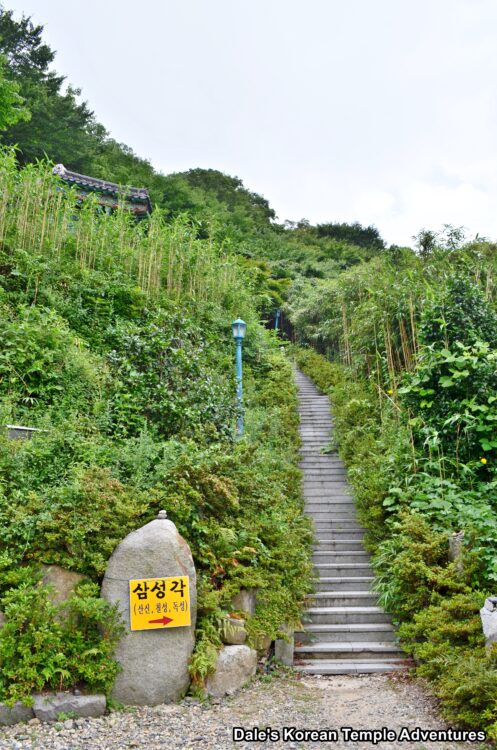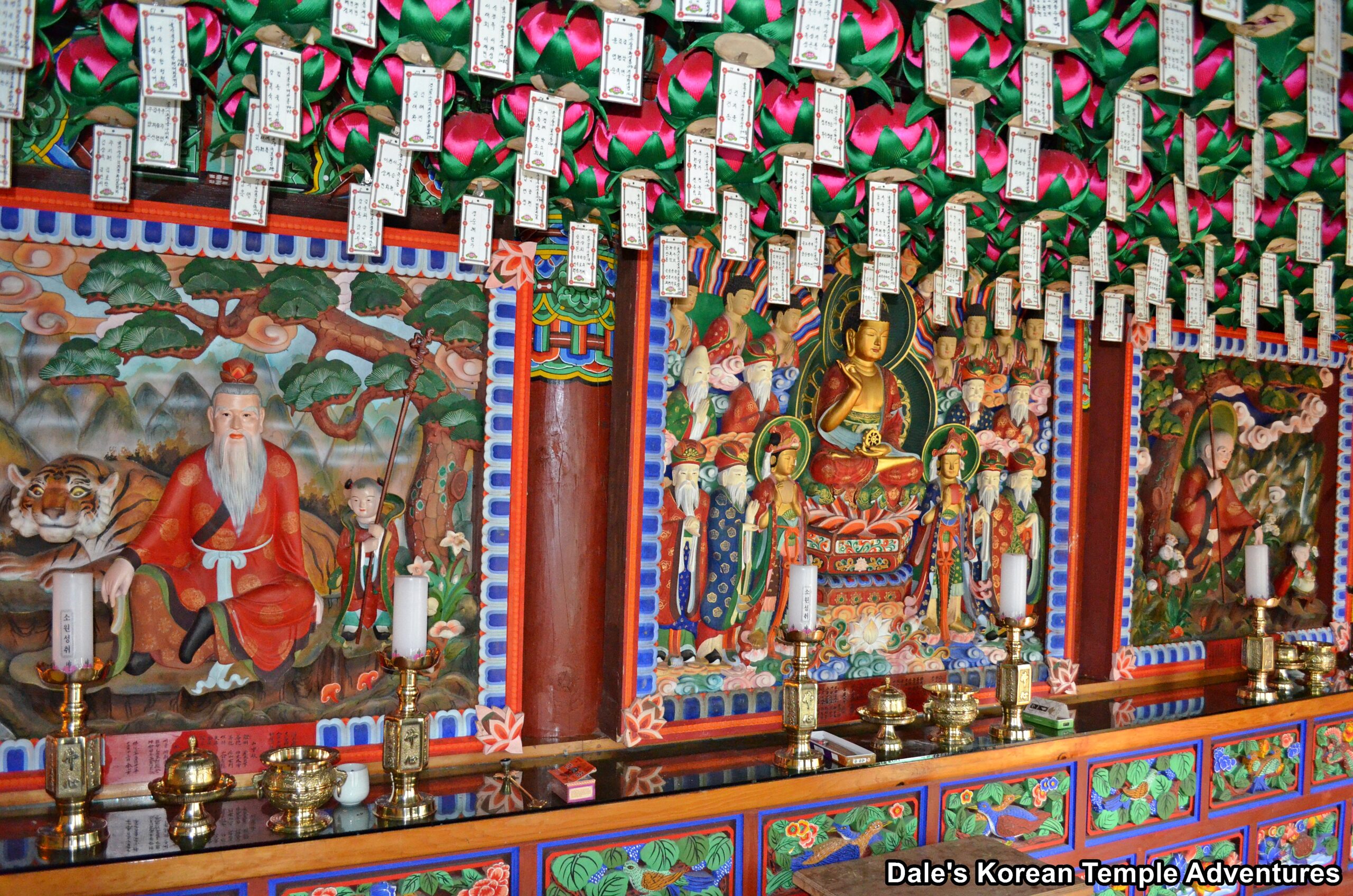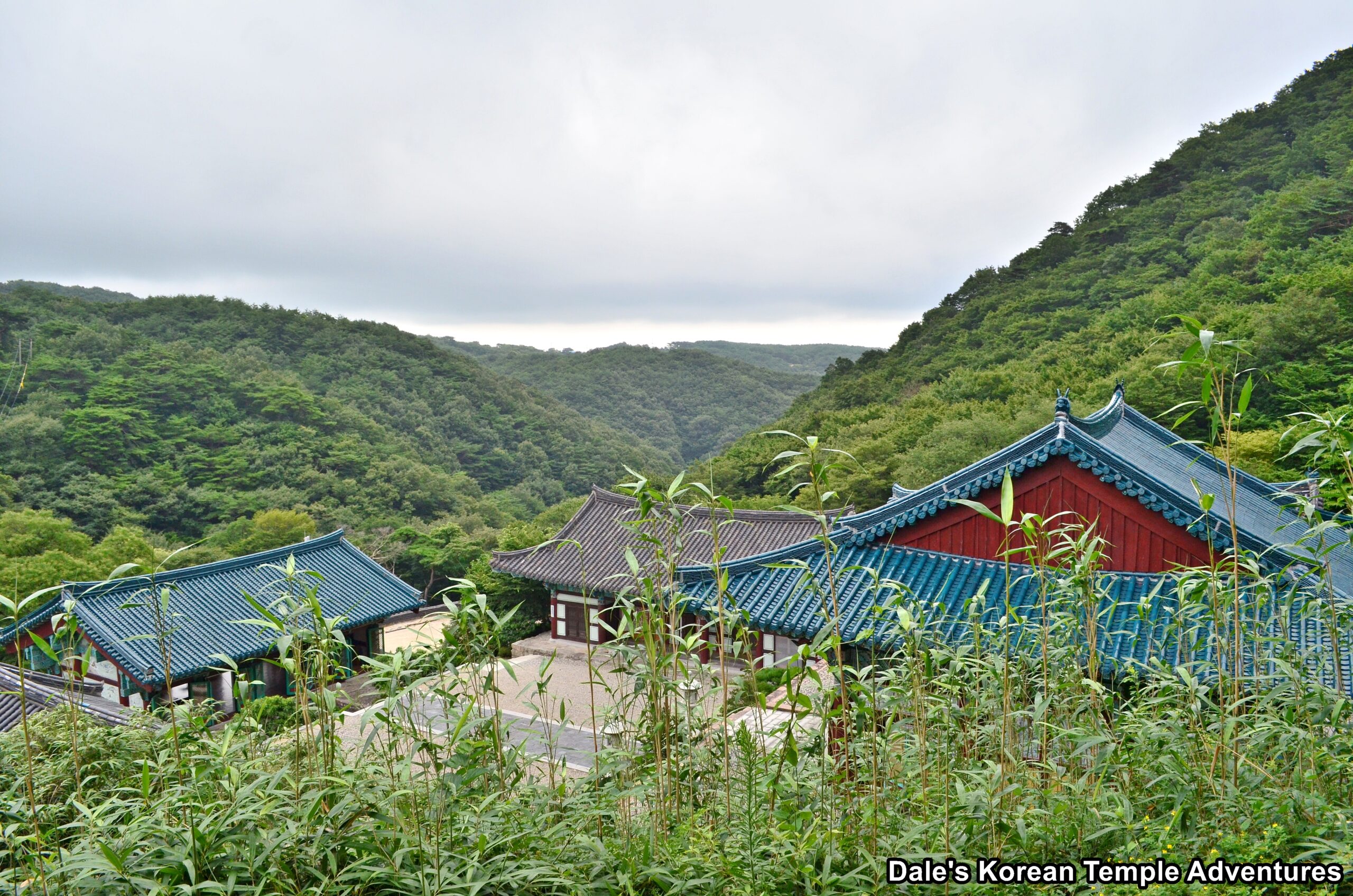Sinheungsa Temple – 신흥사 (Buk-gu, Ulsan)
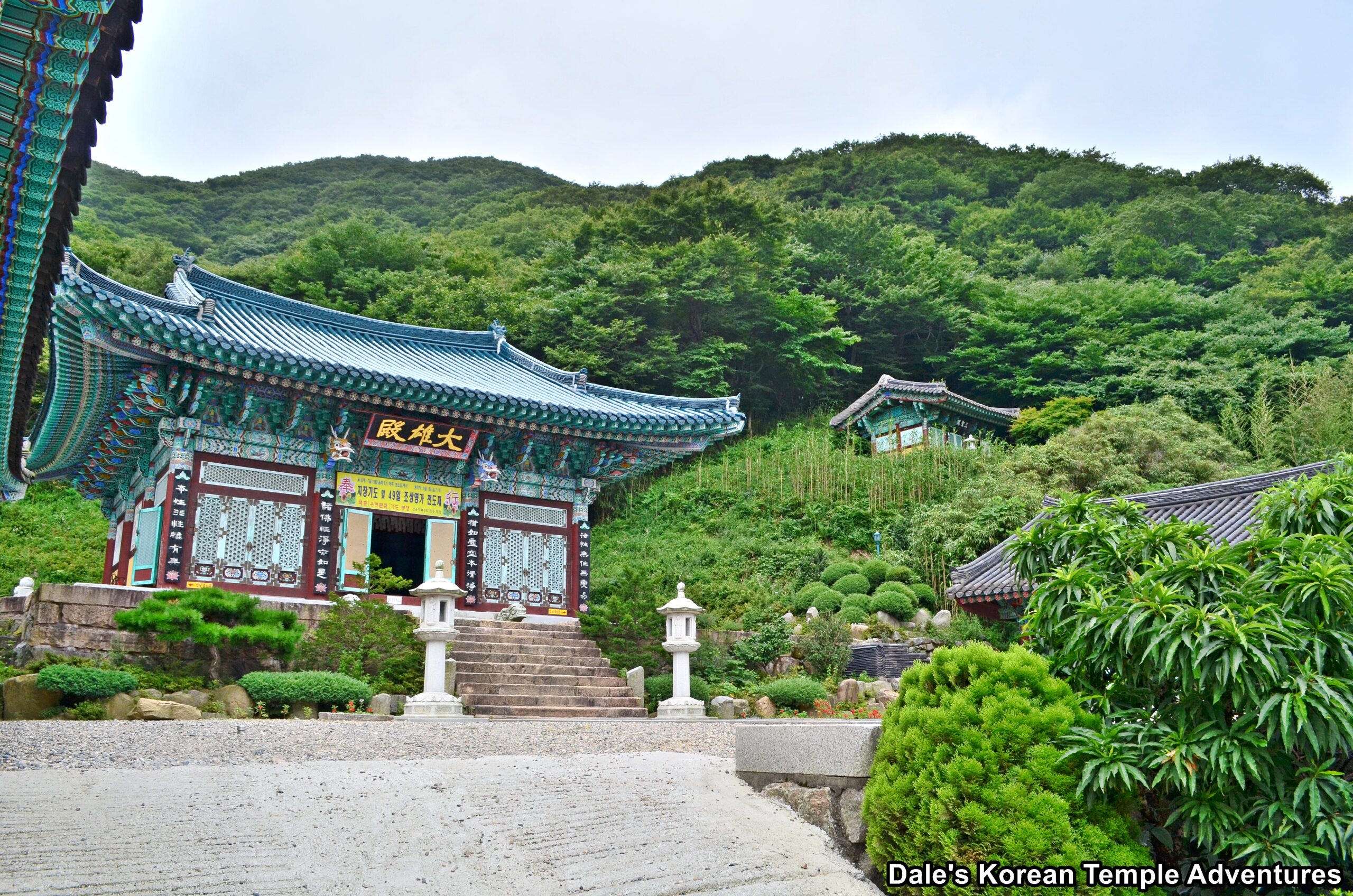
Temple History
Sinheungsa Temple is located in Buk-gu, Ulsan. The temple was first founded in 635 A.D. by the monk Myeongrang-beopsa. The temple was built in the hopes of peace. Originally, the temple was named Geonheungsa Temple. According to temple records, the temple helped train one hundred monks in 678 A.D. Sinheungsa Temple also played a part in the Imjin War (1592-1598). The temple sent three hundred bags of rice and warrior monks that joined the Righteous Army in the defence of the Korean peninsula. Unfortunately, because of the role it played in defending Korea, Sinheungsa Temple was destroyed by the invading Japanese. The temple was later rebuilt in 1646 by Yi Geup, who was a military commander. It was also at this time that the temple changed its name from Geonheungsa Temple to Sinheungsa Temple. Sadly, Sinheungsa temple was destroyed, once again, by fire in 1686. It was later rebuilt.
During the Korean War (1950-1953), some of the shrine halls and buildings were damaged at Sinheungsa Temple, as the area was a known area for conflict during the war. So instead of having a Daeung-jeon Hall, the temple’s Eungjin-jeon Hall was used as the temple’s main hall. Then in 1998, a newly made Daeung-jeon Hall was built at Sinheungsa Temple. This allowed the Eungjin-jeon Hall to be shifted to the left of the main hall and the newly built Daeung-jeon Hall took up the central position in the temple courtyard.
Temple Layout
You first approach Sinheungsa Temple up a long valley. Along the way, and especially if you visit during the summer months, you’ll find a lot of campers and tents in this valley. Finally at the temple parking lot, and up a steep set of stairs, you’ll pass by an ancient, towering tree. Now you’ll be standing squarely in front of a two-storied structure. The first floor acts as the Cheonwangmun Gate, while the second story acts as a lecture hall.
Passing through the Cheonwangmun Gate that has paintings of the Four Heavenly Kings on the walls of this entry gate, you’ll enter into the main temple courtyard at Sinheungsa Temple. To your far right, you’ll find the monks’ quarters. And next to this residence is a spring for which the temple is famous. And to your far left is the administrative office.
Straight ahead of you is the newly built Daeung-jeon Hall. Around the exterior walls of this large main hall are various murals that include murals dedicated to the Nahan (The Historical Disciples of the Buddha). Stepping inside the Daeung-jeon Hall, you’ll find that the interior walls are adorned with murals dedicated to various Bodhisattvas like Munsu-bosal (The Bodhisattva of Wisdom), Jijang-bosal (The Bodhisattva of the Afterlife), and Bohyeon-bosal (The Bodhisattva of Power). And hanging on the far right wall is a wood-relief carving of a Shinjung Taenghwa (Guardian Mural). As for the main altar triad, it rests beneath a large red canopy with an equally exquisite wood-relief carving of Seokgamoni-bul (The Historical Buddha) at the centre of the Buddhist artwork. As for the main altar triad, the central image is that of Seokgamoni-bul (The Historical Buddha), who is joined on either side by Munsu-bosal and Bohyeon-bosal.
To the left of the Daeung-jeon Hall is the aforementioned Eungjin-jeon Hall. This compact shrine hall dates back to the late-Joseon Dynasty (1392-1910). Out in front of the Eungjin-jeon Hall is a modern three-story pagoda. Stepping inside the Eungjin-jeon Hall, you’ll find white stone statues of the Nahan (The Historical Disciples of the Buddha). They are joined in the centre by a triad of all-white statues. Again, Seokgamoni-bul sits in the centre of the main altar triad. Looking around the interior of the Eungjin-jeon Hall, you’ll find a beautiful collection of fading murals that include floral designs, Nahan, and dragons.
The final temple shrine hall that visitors can explore at Sinheungsa Temple is the Samseong-gak Hall. This shaman shrine hall is situated up a long, overgrown set of stairs. As you enter the Samseong-gak Hall, you’ll be greeted by three wood-relief carvings of three Korean shaman deities. They are Sanshin (The Mountain Spirit), Chilseong (The Seven Stars), and Dokseong (The Lonely Saint). All three are masterfully executed and vibrantly painted.
How To Get There
To get to Sinheungsa Temple, you’ll first need to get to the Hogye train station in northern Ulsan. From the Hogye train station, you’ll then need to take a taxi to get to the temple. The taxi ride should take about twenty minutes, and it should cost around 8,000 won (one way).
Overall Rating: 6/10
There are a few highlights to be enjoyed at this historic temple like the main altar inside the Daeung-jeon Hall. The wood-relief carving backing the main altar statues and the large, intricate red canopy that they all rest beneath is stunning, as well. Another highlight to the temple are the statues and dancheong inside the Eungjin-jeon Hall. And finally, the vibrant wood-relief carvings inside the Samseong-gak Hall are something to keep an eye out for, as well.
